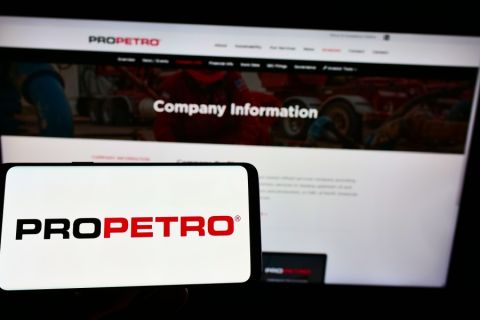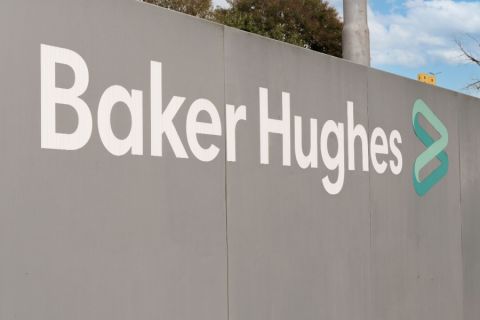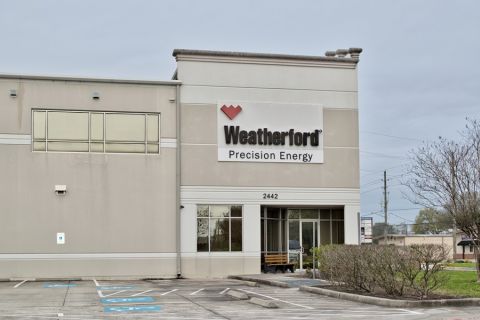Dan Kellogg wanted to be a car-maker. Dennis Ferstler planned to sail the world's oceans, a la Jacques Cousteau. Their dreams brought them eventually to the Gulf Coast oil and gas industry, founding privately held Alpine Resources Inc. in Houston and eventually amassing a fortune of producing assets along the Texas and Louisiana coasts. Their financial strategy resulted in a successful asset sale this past summer for $122.5 million in profit that belonged 100% to them. A native of South Bend, Indiana, Kellogg's introduction to the upstream energy business was upon his recruitment by Exxon out of engineering school at Purdue University. He had planned to work for General Motors, but moving to the South and finding oil and gas seemed more exciting, especially in the industry's go-go days, the 1970s. "The energy industry is where I saw more opportunity than I saw in an auto-maker office or plant. Exxon had a program for educating its new engineers to understand petroleum engineering," Kellogg says. He was put to work on Exxon's onshore assets in South Texas, based in Corpus Christi. Ferstler found his way to Exxon too. Upon getting a degree in oceanography from Southampton College on Long Island, he set out to make a living in the field. "Jacques Cousteau didn't make his fortune at what he was doing. In fact, he puts money into it, and no one told me that," Ferstler recalls. He returned to school for a degree in geology. "I enjoyed studying the processes of earth science." Exxon enlisted him and put him and his degrees to work on its offshore assets based in New Orleans. The pair didn't cross paths, however, until several years after they left the major oil company. Kellogg had joined a Houston independent, Wainoco Oil & Gas, which operated wells onshore the Gulf Coast, and then set out on his own, independently marketing properties. "This was before Randall & Dewey and Albrecht & Associates. I was locating sellers of properties, doing evaluations and presenting the properties to buyers." Meanwhile, Ferstler had gone to Texas Eastern and then Texas Oil & Gas. Finally, in 1984, Ferstler formed his own production company, which later became Alpine Resources. He met Kellogg in 1985 when they were sitting on opposite sides of an asset-divestment table: Kellogg was marketing an asset and Ferstler was looking to buy. Ferstler convinced Kellogg to join him at Alpine. "I had recognized the limitations I had on the engineering side and wanted to align myself with an engineer," Ferstler says. "Dan was that engineer. It took me a few months to convince him to come onboard and form a partnership with me." The combination was key to Alpine's foundation. "That's what we attribute so much of our success to-we're both from a technical background," Ferstler says. "A lot of entrepreneurs in this industry come from a business or financial background, and find it hard to distinguish a good deal from a bad deal. With our expertise in engineering and geology, we can evaluate the risks associated with a particular project and be able to tell a good deal from a bad one." Kellogg adds, "That's not to take away any capabilities of being businessmen." This additional acumen completed the set. During the next 19 years, the pair amassed 90 billion cubic feet equivalent of proved reserves onshore the Texas and Louisiana coasts, 95% operated and 50% gas, initially with cash, and then with commercial debt and mezzanine funding. By pumping every dollar of cash flow back into the operation, they resisted tapping into private equity for cash. As Alpine's cash flow increased over time through drilling and development, they sold their West Texas division and their interest in Alabama Ferry Field in 2001 for approximately $28 million. By 2004, Alpine was fully right-side up; all the enterprise value belonged to Kellogg and Ferstler. They received an unsolicited offer later in 2003 and walked away, but decided to formally test the marketplace. They sold the majority of their operated properties this summer to Denver-based Delta Petroleum Corp. for $122.5 million. They had completely retired their debt before the sale and, therefore, all of the proceeds went to their own bottom line. Slow going "Most of the offshore deals were too big for us as we were starting. It was easier to do smaller onshore deals with the capital we had available," Kellogg says. They were pushing out with nearly no money. "Neither of us came from rich daddies," Ferstler says. "When I convinced Dan to join forces, we got a little office space for ourselves downtown that we initially borrowed. It was some time before we got some money together, enough to hire a secretary." The pair didn't tap outside capital until 1995. Their $550,000 loan from Southwest Bank of Texas was that energy lender's first to the sector, and Alpine's first bank note. "Before that time, we were buying small properties-$20,000 and $40,000-here and there, limited to our cash flow," Ferstler says. Kellogg adds, "We were comfortable with the loan because the property we were buying had good upside. We were real excited when we got that upside producing. We added to that borrowing base with another acquisition and were able to pay off the loan out of cash flow within a couple of years." In 1997, the partners came upon two company-making opportunities. The first was the purchase of a drilling prospect in Newton Field in East Texas north of Beaumont, where they put together 480 acres of leases for little or no money by giving the mineral owner an override on everything Alpine did on the property, even if it was off his land. The pair promoted out the drilling of the first well-at approximately $1 million-by selling 100% working interest and retaining a 20% back-in. They also were able to retain operations. "We got the log on the well and our participant was disenchanted due to the low resistivity of the objective sands. But we knew better," Ferstler says. Alpine bought the interest back for $100,000, completed the well and tested it. "We had a good well that after stimulation produced at more than 250 barrels of oil per day. We drilled 10 wells at 100% interest after that first one." At the same time, Alpine was buying privately held, Conroe, Texas-based Westland Oil Development, which held producing assets in Texas and Louisiana. The pair went to mezzanine financier Aquila Energy Capital. "We didn't have the equity to put into that transaction. It was about a $10-million deal. We would have needed $2- to $4 million of equity to do it in a traditional banking facility, so we went to a mezzanine group that would do highly leveraged financing," Ferstler says. Kellogg adds, "Aquila would not only loan on the acquisition, it would also fund our drilling and workover program on the Westland assets as well as at Newton Field." The total financing facility was $25 million. Ferstler says, "The key to the success of that financing facility was our ability to purchase back the override provided the landowner covering the whole field and having 100% working interest. Every barrel of oil increase went straight to our bottom line and not partners. We felt the initial well was a discovery, took the risk and it worked." The field had approximately 30 additional proved undeveloped locations when Delta Petroleum purchased it this summer. Financing By 1997, some 13 years after its formation, Alpine was catapulted into the league of multimillion-dollar deal-making. Did the pair look at private equity then? "We decided early on not to take on equity partners, and to leverage into each transaction we did," Ferstler says. Kellogg adds, "We're dedicated, hard-working guys. We've averaged 12 hours a day in the office the last 20 years. We thought that if we were going to work this hard, we were going to work for ourselves and not for someone else. We probably could have grown the company to twice the size it was if we had gone with equity partners, but then when we sold, we would only have less than half the profits." After the Westland purchase and during development of Newton Field, the pair set out to buy out all of the working interest partners of Westland's wells, so Alpine eventually held 100% interest in most of the assets. Then, in 2000, it bought the Murphy Baxter companies, a family-held E&P that had been in business since the 1950s and held reserves and production in almost every basin in Texas and Louisiana. The pair again used mezzanine money from Aquila to fund the $29-million deal. At one point, Alpine's debt totaled $55 million, all mezzanine and all with Aquila. "It's kind of a lot of money to have borrowed as high-interest-rate mezzanine debt," Ferstler says. Some of the mezzanine money was borrowed at 13.5% plus fees and other costs that bumped the total cost of money into the high-teens. "We knew we had to drill our proved undeveloped locations to be able to pay down the debt. We drilled a lot of highly successful wells and at the same time got lucky with product-price increases." In 2002, with cash flow, the pair paid off the Aquila facility with a loan from Bank One at under 5%, using only half of Alpine's assets to collateralize the note. "The other half of the assets we had were uncollateralized at that point," Kellogg says, "We didn't even need all of our assets. Our drilling program had been so successful." The pair effectively paid off the Bank One debt in 2003, using cash flow, so that by year-end Alpine had no debt and held 100% working interest in nearly all of its reserves, production and leases. Then came an unsolicited buy-out offer. "We were not in the active selling mode when we were approached. When they came to us, we thought it was a good idea to entertain them," Ferstler says. "We put a comprehensive reserve report together, which we didn't have before. We only had reserve reports that were necessary for Bank One and Aquila. We didn't have all of our assets in reserve-report form." Ryder Scott was retained to evaluate the reserves. When the pair reviewed what they had amassed, they were impressed. "It became obvious that it was a good time to sell," Ferstler says. But there was no deal. "That particular buyer's outside counsel was pretty tough on the requirements in the purchase agreement, and we were unable to reach an agreement," Ferstler says. He and Kellogg formally put Alpine up for sale when the unsolicited deal didn't close, retaining Petroleum Place Energy Advisors to market the assets. "We liked the way they present packages of producing assets to potential buyers," Ferstler says. Alpine had many proved undeveloped (PUD) reserves. "Someone had to be able to explain in a technical way what those undeveloped reserves were." Publicly held Delta Petroleum made the winning bid and initially offered some stock as well as cash as payment. Ferstler and Kellogg turned that down. Delta returned immediately with an all-cash offer. The pair took it: $122.5 million. They had expected to get a winning offer between $100- and $140 million. The result was right on target. "There was a lot of upside in our reserves," Ferstler says. "The properties needed a lot of capital to develop that upside, and Delta could do this." Capital redeployment The deal with Delta was structured as an asset transaction, so Alpine Resources continues, fully staffed. The pair kept some properties in its asset base-a number of fields scattered around the Gulf Coast, and all the overrides and mineral interests they owned. "The plan when we started was to divest at about this point," Ferstler says. "Luckily, the stars were aligned and we were able to catch some of the upswing in energy pricing. We don't have a buy-and-hold-to-death mentality. We like buying, developing, enhancing and selling." Upon closing, why didn't they just buy a retirement ranch in South Texas or an oceanfront hacienda in Costa Rica? "I'm 50 and Dan is 53," Ferstler says. "We have a lot of time left for working. Our expectation going forward is to make a significant acquisition so that we will be much bigger next year than we were before the sale." The partners continue to focus on Gulf Coast opportunities. "We know all the players and we understand the dynamics of how the reservoirs work. We like the Frio, Yegua and Wilcox." It's easy to be the seller in the current marketplace and tough to be the buyer. "It's very competitive," Kellogg says. "You have to be real careful of buying in this environment. With high pricing, you have to really believe in the upside and that you can develop that upside." Even though the partners have not used private equity in the past, they expect to tap that capital source as they move to larger targets. What is certain is that the partners don't expect to take Alpine public. Instead, public companies are their acquisition targets right now, and they would take the companies private upon closing. "Post-Sarbanes-Oxley, there are a lot of companies that are too small and don't have the mass to be a public company. Those are the companies we're targeting in our expansion mode," Ferstler says. In the past 20 years, have they each achieved their goals? Ferstler says, "I met some of my goals early. I wanted to work offshore and my goal was to get into the frontier drilling arena." In his first couple of years with Exxon, he was involved in drilling wells off the East Coast in the Baltimore Canyon, "a tremendous frontier area, so I met my professional goals pretty early. "It wasn't until after that when my financial goals were even on a radar screen. The past 20 years have been a great run, but there is a lot of drive left in me for the next deal. " Kellogg says, "I always had avid financial goals, and the will to attain them. My early philosophy in choosing the jobs that I took was the opportunities I saw that would put me in a key position to be able to take advantage of a some upside-a large incentive program, stock options or a situation where I could earn an interest in a well. "So, I have surpassed my goals as far as being an owner and manager as well as my financial goals, and at an earlier age than I thought was possible."
Recommended Reading
ProPetro Ups Share Repurchases by $100MM
2024-04-25 - ProPetro Holding Corp. is increasing its share repurchase program to a total of $200 million of common shares.
Baker Hughes Hikes Quarterly Dividend
2024-04-25 - Baker Hughes Co. increased its quarterly dividend by 11% year-over-year.
Weatherford M&A Efforts Focused on Integration, Not Scale
2024-04-25 - Services company Weatherford International executives are focused on making deals that, regardless of size or scale, can be integrated into the business, President and CEO Girish Saligram said.
Range Resources Holds Production Steady in 1Q 2024
2024-04-24 - NGLs are providing a boost for Range Resources as the company waits for natural gas demand to rebound.
Hess Midstream Increases Class A Distribution
2024-04-24 - Hess Midstream has increased its quarterly distribution per Class A share by approximately 45% since the first quarter of 2021.





